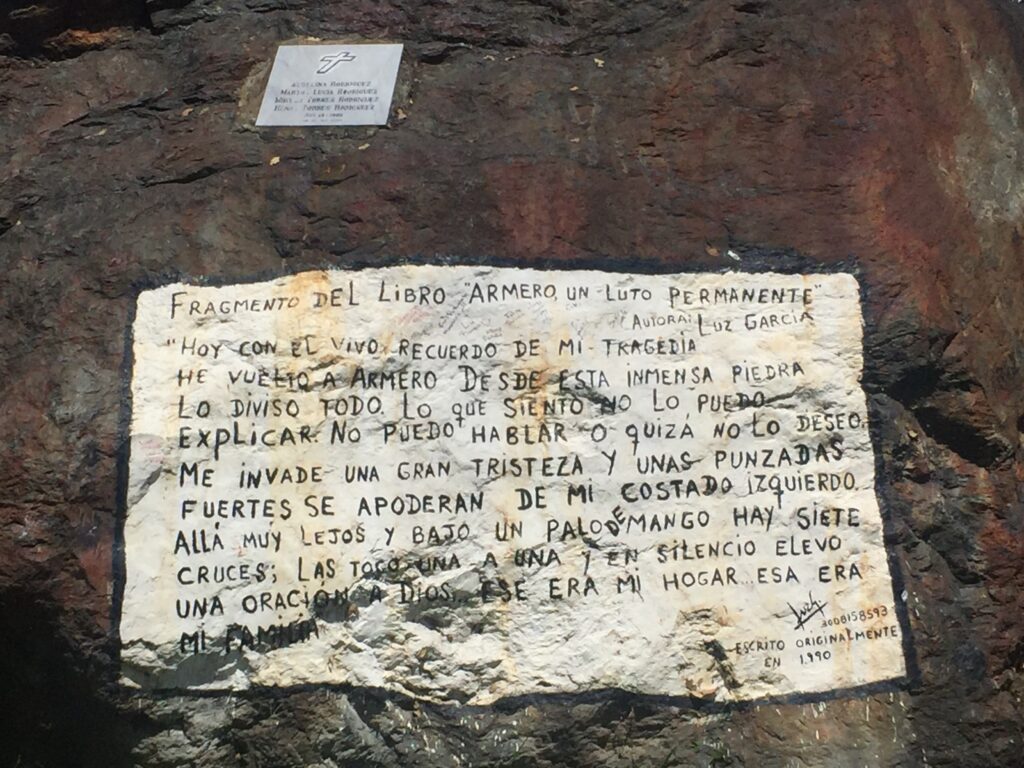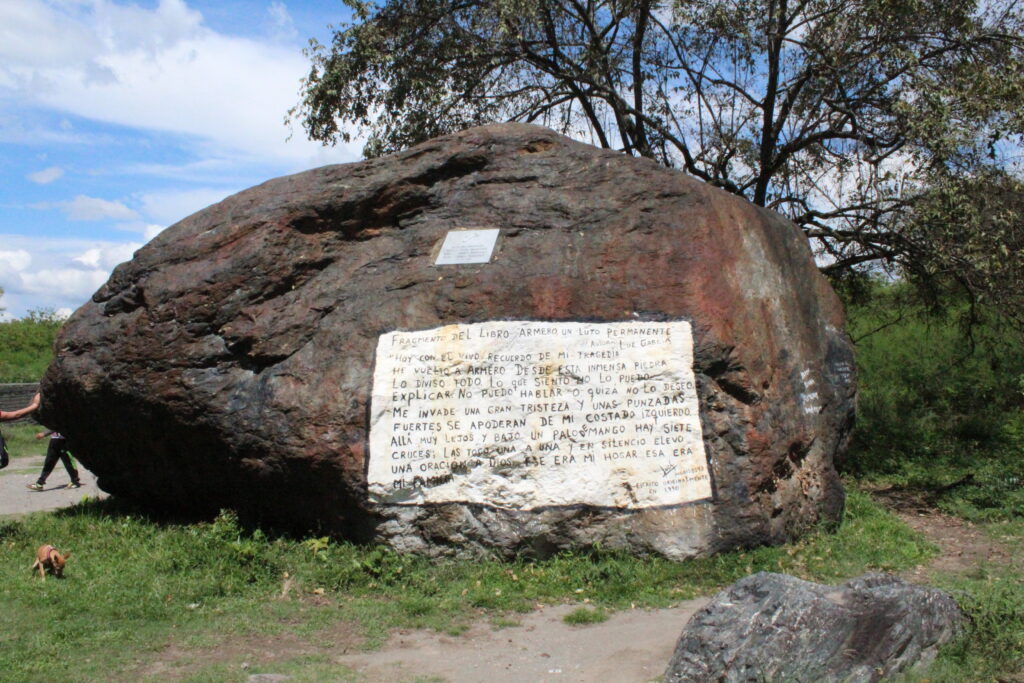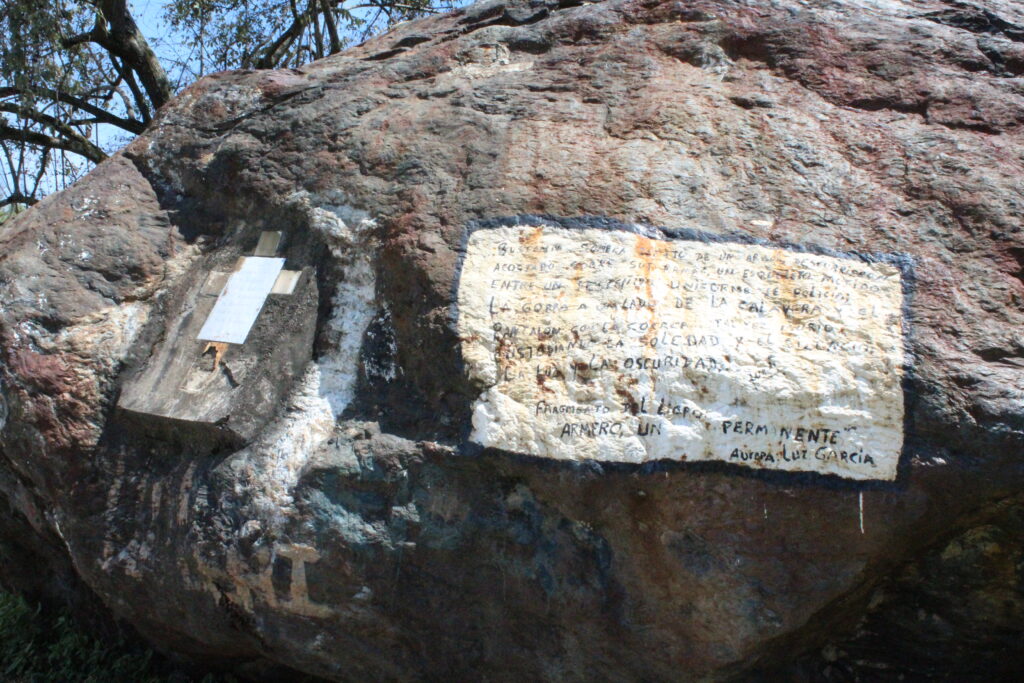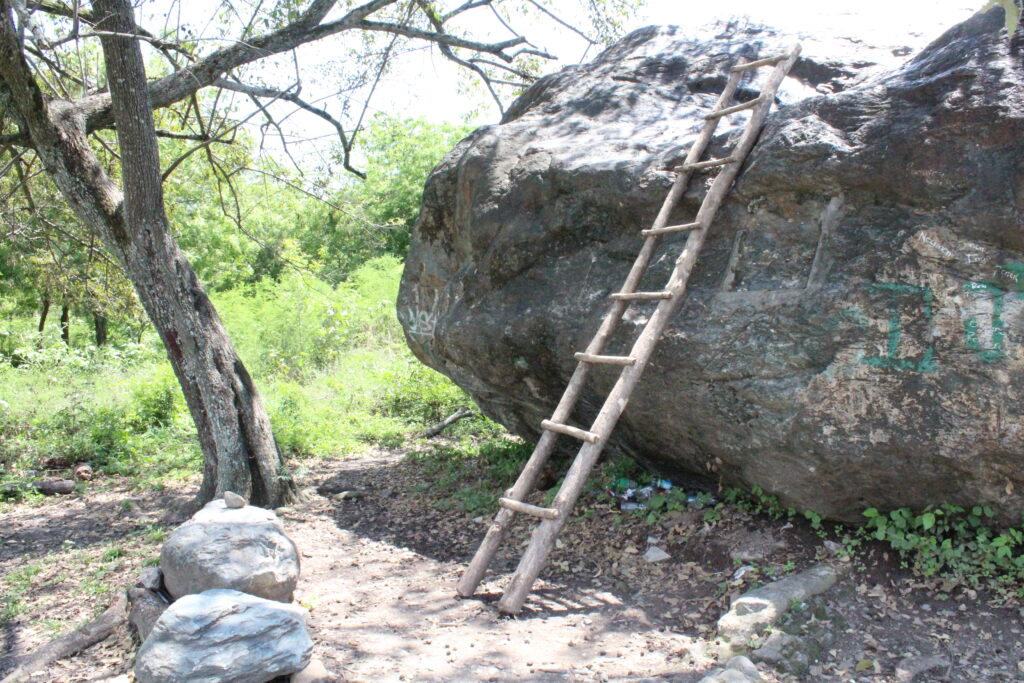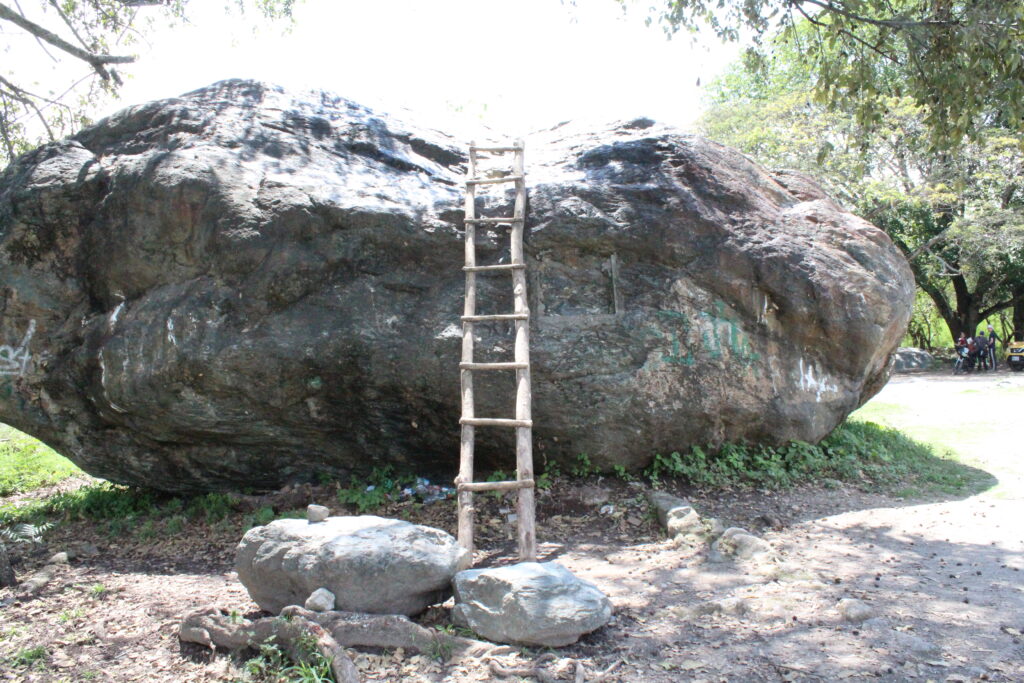This bolder sits where a police station once stood. Weighing 200 tonnes, it originated from the heights of the Nevado del Ruiz volcano. Propelled by the lahars caused by the eruption, it travelled some 45km at speeds of 100km an hour. In the years after the eruption, it has become a landmark for disaster tourists and a symbol of loss for survivors. At its rear stands a ladder to be used by curious visitors to clamber atop the rock and inspect its topmost surface. Often, it is accompanied by an informal tour guide who, for a small fee, tells the story of the Armero Tragedy and the town’s regeneration.
The inscription on the boulder in the photograph was penned in 1990 by writer and poet Luz García, whose mother, sister, nieces and nephews all perished in the disaster. In her book, Armero, un luto permanente (Armero, Everlasting Grief), which she wrote as an attempt to make sense of events, she describes this return to her hometown: “On the road to the church, after the police station, I saw some giant rocks. They were immense like my anxiety. They were the offspring of Nature who had sent them as silent witnesses to her destructive powers. I stood before the largest one. She would be an accomplice to my memories.” A photograph of this boulder adorns the cover of her book which she titles La piedra asesina (The Killer Stone): the image is positioned like a mug shot or a piece of photographic evidence.
The boulder has also become the subject of artistic treatment. It is the protagonist of an audio-visual piece called Orbit (Órbita) by Colombian artist and sculptor Santiago Reyes Villaveces. Orbit was shown in 2019 at the Instituto de Visión, a gallery in the north of Bogotá, in a solo exhibition called Lo bravo y lo manso (The Savage and the Tame). It is 360° video recording of the rock on which Luz García painted her inscription. A drone camera loops around the boulder slowly and repeatedly at equidistance from its spherical surface. The boulder still records García’s thoughts, although compared with the image on the cover of her book, they are tired, worn, and faded. The bright white rectangle that serves as a canvas for the text is stained with streaks of red, seeping from the stone in the form of iron oxide. Her words are accompanied by new scrawls of graffiti that are scratched into the boulder’s surface. As it rotates, the camera shows how its oval shape is uneven, jagged, and pockmarked.
